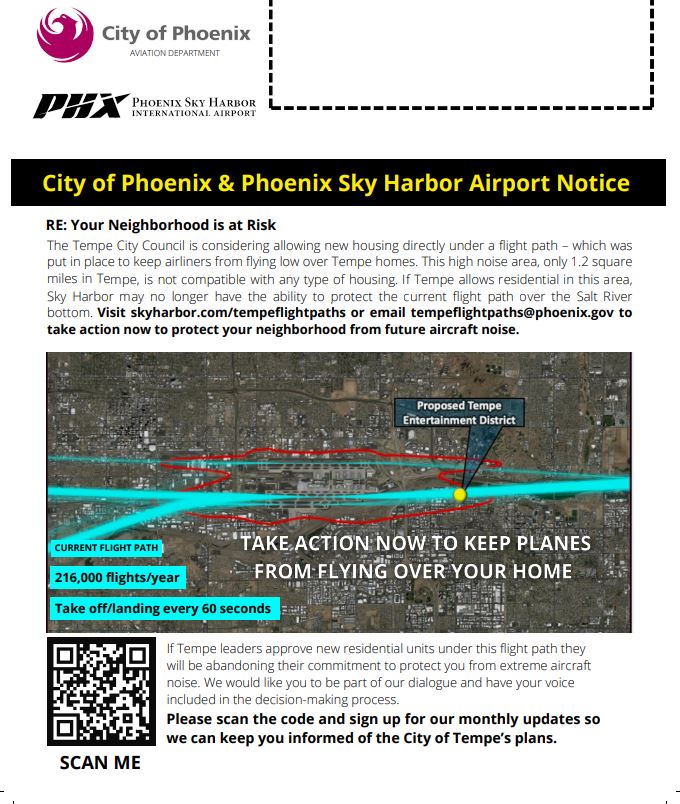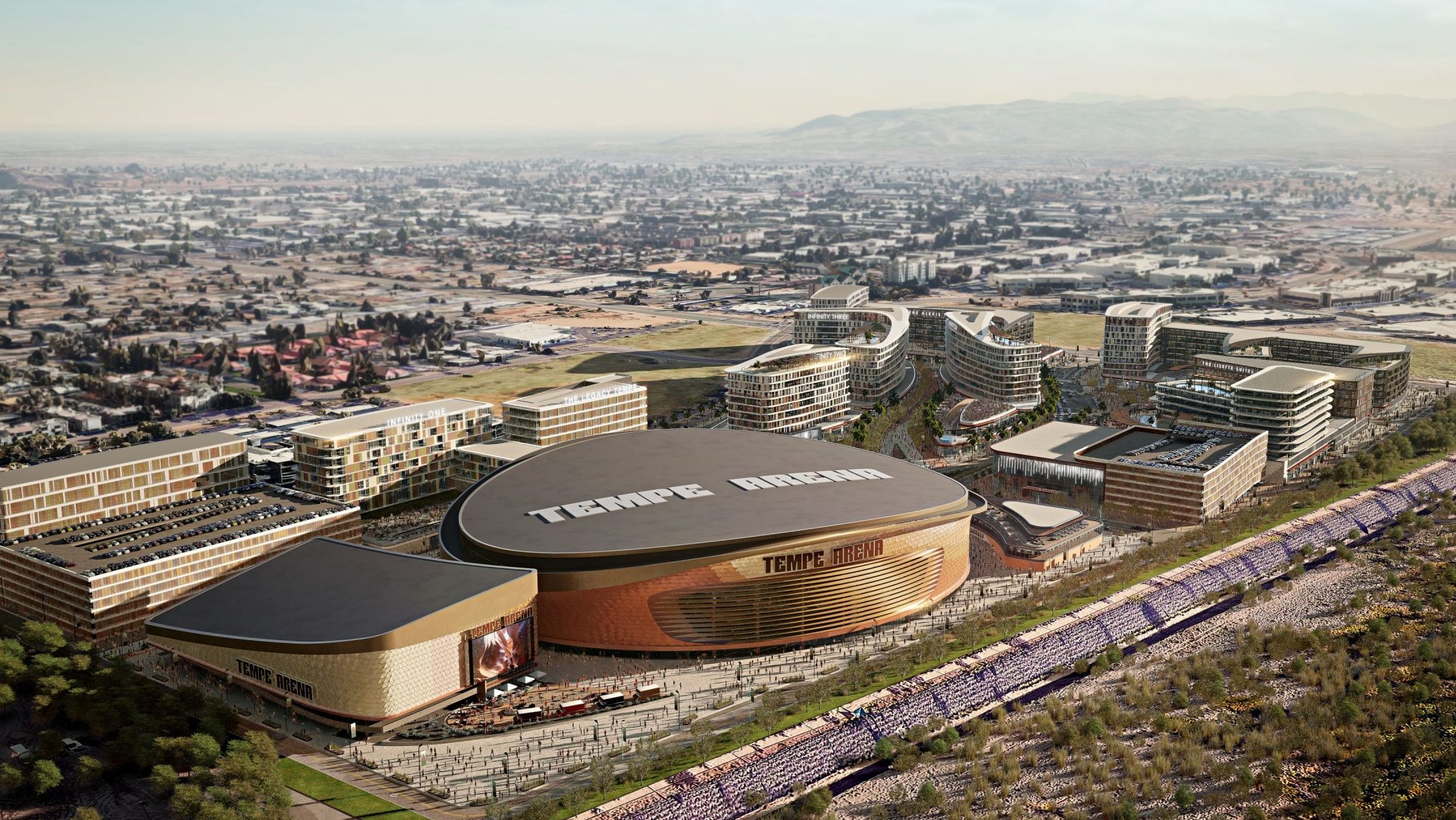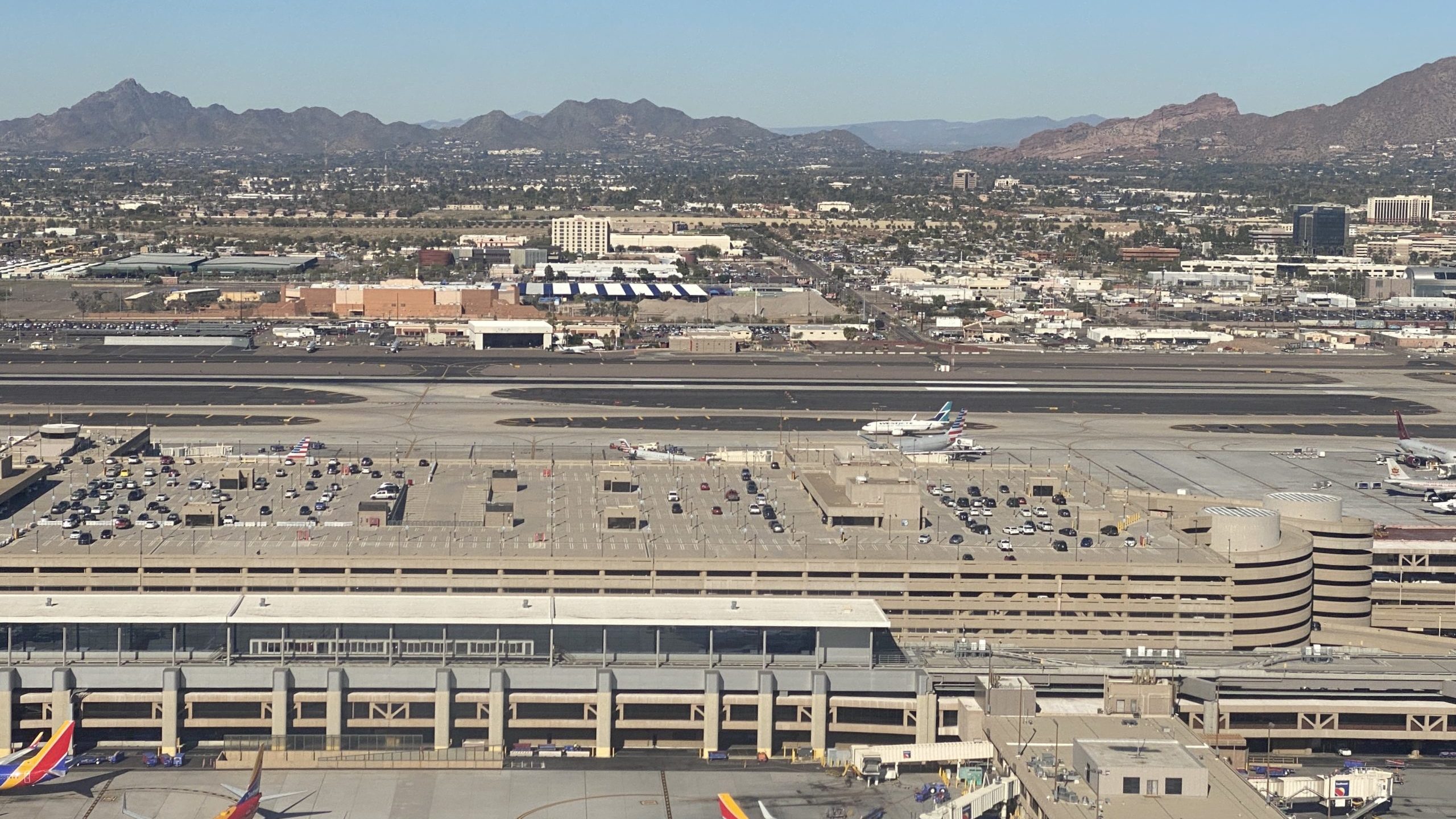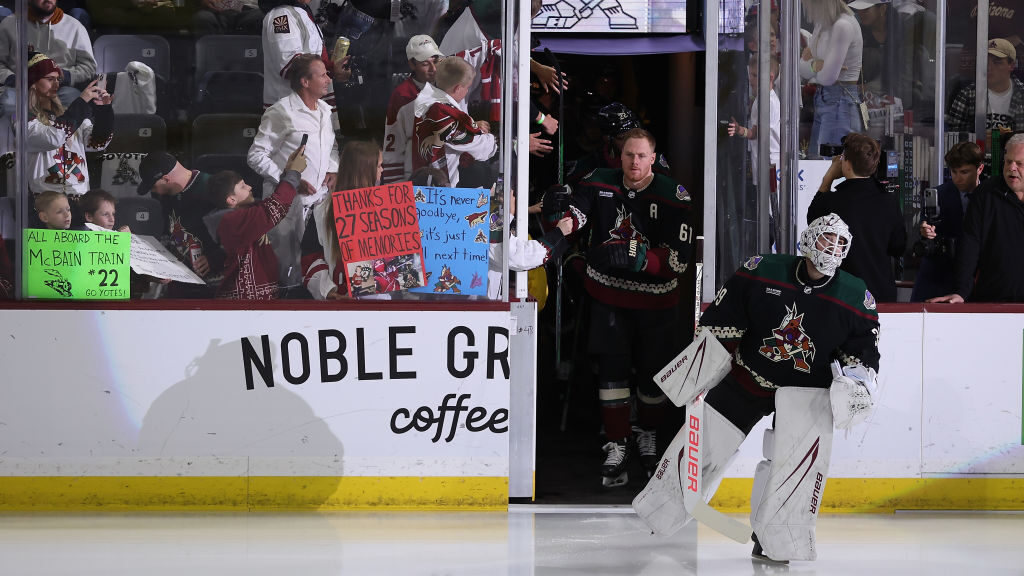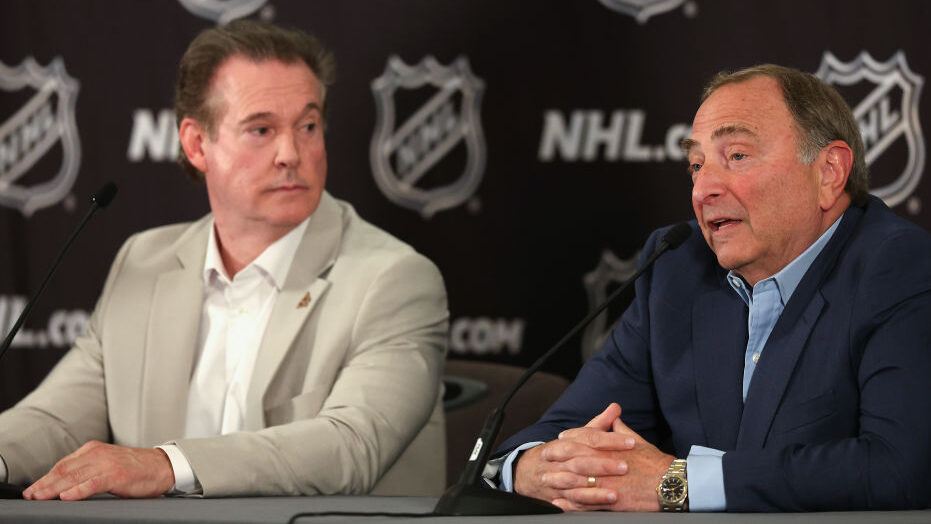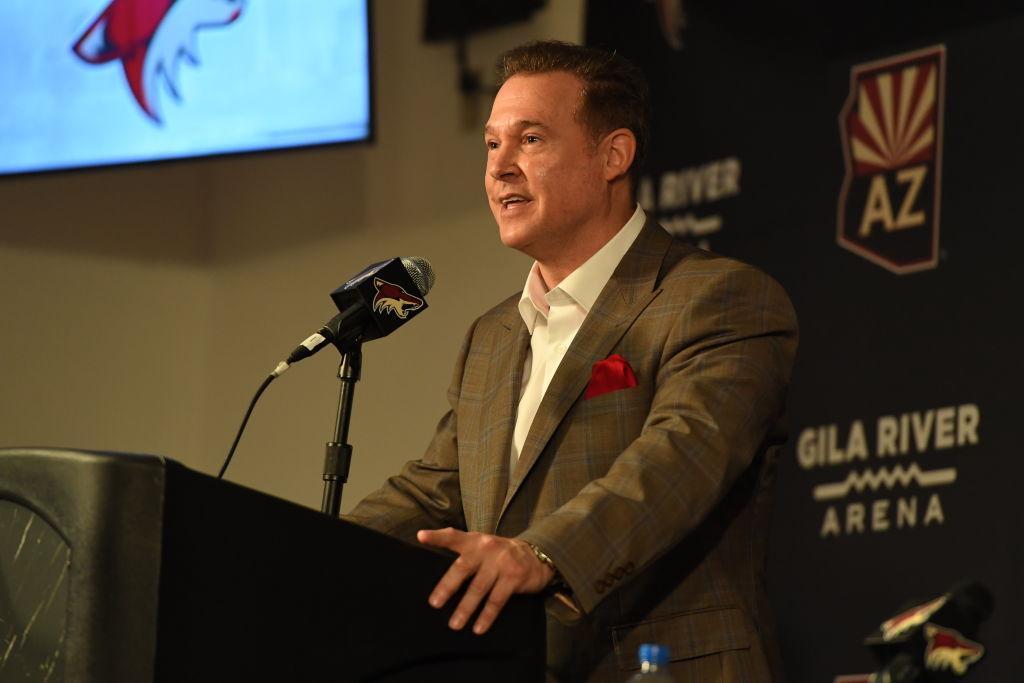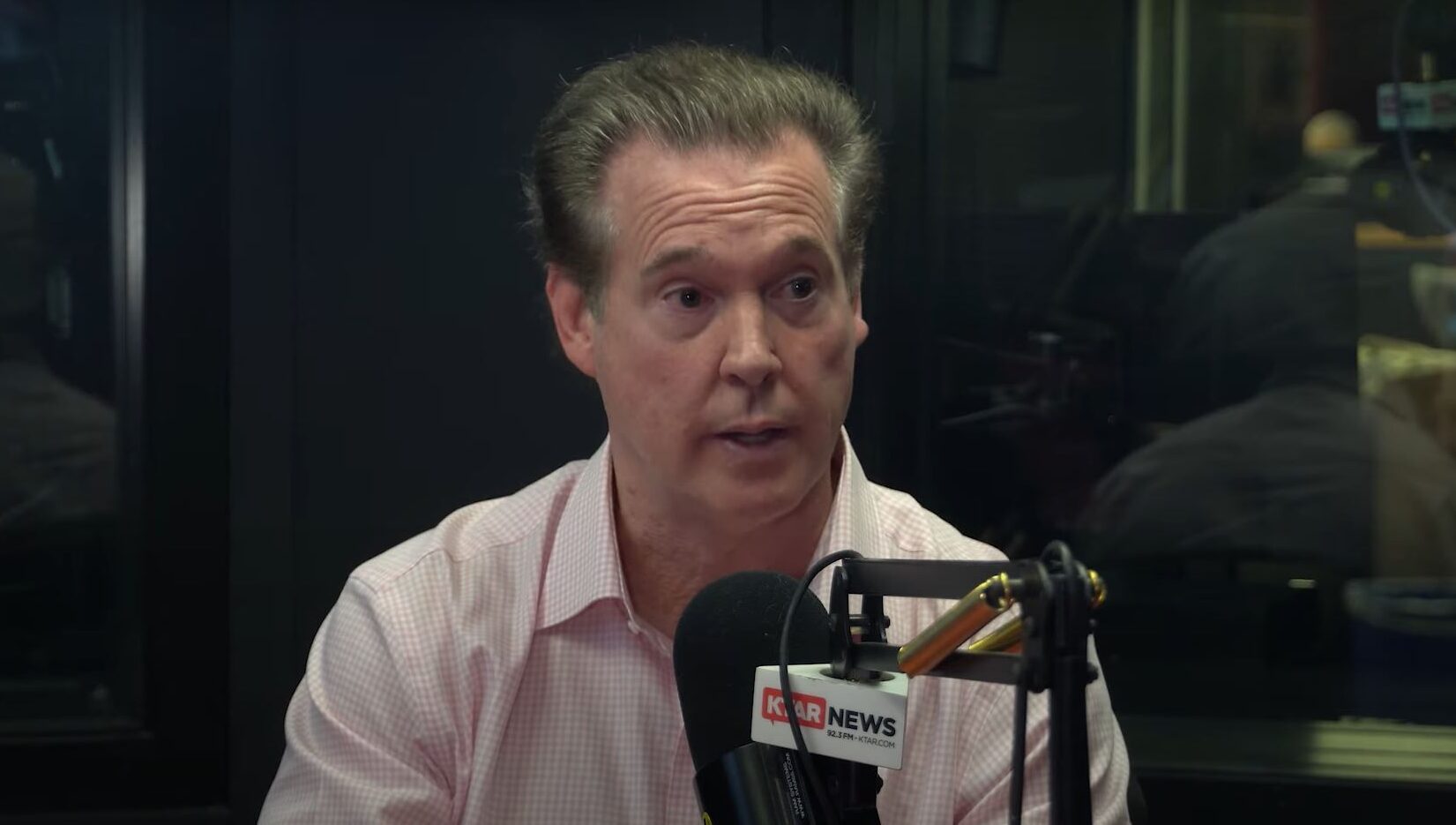Phoenix Sky Harbor’s issue with Coyotes’ Tempe arena plans gets political
Mar 30, 2023, 3:34 PM | Updated: 3:43 pm

A rendering of the Arizona Coyotes' proposed Tempe arena revealed June 3 after a 5-2 Tempe City Council vote to continue negotiations on the plans. (Courtesy Arizona Coyotes)
(Courtesy Arizona Coyotes)
It appeared Tempe and Phoenix were in agreement to clear a path toward a public vote on the Arizona Coyotes’ arena and entertainment district.
Four months ago, the City of Phoenix Aviation Department announced it was finalizing negotiations with Tempe and developers regarding that project. It was good news with Tempe set for a May 16 citizen vote on three proposals (301, 302 and 303) to approve the project.
A key part of that was the “full indemnification against litigation over noise and vibrations caused by aircraft.”
On Tuesday, the operating entity of Phoenix Sky Harbor International Airport reversed course, filing legal action against the city of Tempe for the planned residential development.
The issue is not about airplane safety concerns that even are held by some members of the Tempe Aviation Commission, nor economical concerns coming from former Tempe council members, who worry about affordability for people living in the city.
It is about the noise contour that had been widely discussed, a mile-plus swath of land where the decibel levels are at or above an average day-night level (DNL) of 65 decibels.
Both parties spoke out Thursday, two days after the legal action was announced.
“Their lawsuit is a complete fabrication and it is a political document, not a legal one,” said former Tempe mayor Hugh Hallman at a rally featuring the Coyotes and Tempe’s former mayors on Thursday.
Hallman has been deeply involved in forming the agreement between the city and NHL franchise’s developers. He believes in the agreement where the Coyotes will use private funds to turn former landfill land into an arena, hotels, residences, offices and a concert venue at Priest Drive and Rio Salado Parkway. It is projected to cost around $2.1 billion.
Hallman, in a small aside after touting the economic benefits of building the development, called the legal complaint about the cities’ disagreements an “abject lie.”
“Why do I say that? Because after (former Tempe Mayor Harry Mitchell) negotiated the settlement and (former Tempe Mayor Neil Giuliano) signed it, the parties were a little not sure whether or not Tempe would build single-family residences in downtown Tempe and on Town Lake in the 65-DNL contour — the fancy way of saying the noisy place.
“Why were they worried about that?” Hallman asked. “Because believe it or not from ancient times, there was still single-family zoning on the very site we’re talking about. So Tempe addressed that with Phoenix. Mayor Giuliano exchanged letters with (Phoenix Mayor Skip) Rimsza to clarify that all the parties agreed that single-family residential buildings would not be built in this area. And they agreed that multi-family housing could be built in this area.”
Chad Makovsky, director of aviation services at Sky Harbor International Airport, also told KTAR News on Thursday that this isn’t about the entertainment district and Coyotes arena, which is only considering multi-family residences. They remain in favor of a stadium.
But Phoenix’s airport fears that Tempe residents near the Salt River bed could, in the future, push back against more development of the airport because of the noise levels.
Makovsky also admitted that this isn’t about this single project.
“This is not about the stadium,” Makovsky told KTAR News. “What this is about is Tempe’s actions not only on this development but on multiple other developments over the last two years that are adding homes underneath the flight paths in this high-noise area … only a mile to two miles away from the end of the runways at the airport.”
The formal complaint in Maricopa County Superior Court has Phoenix, the owners and operators of Sky Harbor, suing Tempe for a breach of contract, “asking the court to rescind Tempe’s recent zoning and land use changes and prohibit future residential uses in an area that the Federal Aviation Administration says is incompatible with residential development.”
Tempe and Phoenix signed a 1994 intragovernmental agreement (IGA) aimed at allowing the airport to continue growing while keeping residents in all of the flight paths around it safe and away from noise.
The understanding of those legal documents have since changed.
Why is Sky Harbor taking legal action now, even if Tempe has been accused of going against the cities’ agreement in the past?
Makovsky said Tempe is questioning the Federal Aviation Administration’s measurements of the 65 DNL noise levels.
“The reason we decided to take action now is because Tempe recently authored a letter to us after we had come up (with) three different framework agreements with Tempe leadership that were ultimately rejected by Tempe City Council,” Makovsky said. “In that letter Tempe sent to us, they said they questioned the FAA’s approval of the noise contours of that high-noise area I’m referring to and wanted their own consultant to do their own analysis of what those are.
“Now the FAA is the authority — they created the rule related to what a high-noise environment is and for the city of Tempe to question the FAA’s jurisdiction like this caused us to believe we were not going to be able to make any progress with them.”
Time has passed and people leading both cities have changed since the 1994 IGA.
In a letter sent to the Phoenix Aviation Department in October 2022, Tempe said a 1999 updated Noise Compatibility Plan — one that was requested by the FAA when the Arizona Cardinals were pushing to build a stadium nearby — was not agreed upon.
Hallman said Thursday that he and other mayors preceding Corey Woods have fought Sky Harbor to develop anything in downtown Tempe, including skyscrapers.
He said downtown wouldn’t exist as it does today had Tempe not fought back. Nor would the developments all along Tempe Town Lake, part of the Salt River bed.
On the other side, Makovsky said the Phoenix Aviation Department sees it this way in the simplest of terms: “The city of Phoenix and Tempe came to an agreement which required the city of Phoenix to move our flight paths in an inefficient location to protect the residents of the city of Tempe.
“We did that and have maintained that flight path. The city of Tempe was asked not to put homes underneath the very flight path that we moved. They are now doing that. They are taking actions to do that.”
KTAR News’ Taylor Tasler and Colton Krolak contributed to this story.


